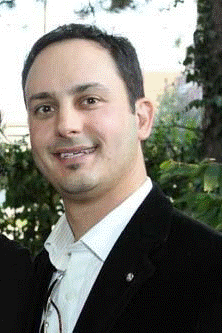Out of the Box Thinking in Livingston County
Tuesday, February 13, 2024
Digital Beat
Out of the Box Thinking in Livingston County
As more communities devise their own broadband solutions, leveraging the upcoming funding from the Infrastructure Investment and Jobs Act, what makes for successful efforts that are responsive to community needs? This is the fifth of six case studies seeking to understand the stories of broadband community champions and the factors that contributed to their success. A final analysis will identify the characteristics of effective broadband leaders, and develop a taxonomy of those working to improve broadband access in their communities in official and unofficial capacities.
This research is supported by the Marjorie & Charles Benton Opportunity Fund.

The county government in Livingston, Michigan, was very clear—it was not going to become an ISP. Long committed to principles of lean government, elected officials were certain that although 56 percent of households in this region do not have access to fixed broadband, the ideal solution should not be government-owned infrastructure.
County Chief Information Officer Kris Tobbe set out to develop an approach that could balance minimal government intervention with effective access to critical infrastructure for residents. The solution: the county directed $12.5 million in American Rescue Plan (ARPA) funds to a middle-mile solution that brings fiber to within three miles of all residents. The county is now waiting to see whether last-mile providers will deliver the final piece of the puzzle: They're building it; will ISPs build off it?
Drive and Experience
In southeastern Michigan, Livingston County is composed primarily of bedroom communities. Despite its proximity to major urban areas such as Lansing, Flint, and Detroit, the region stands out for its relative affluence, boasting the lowest ALICE (Asset Limited, Income Constrained, Employed) poverty percentage in the state. Home to approximately 195,000 residents, this area exudes economic prosperity, however, it faces a significant challenge in terms of digital connectivity. According to a 2022 study, a majority of households in this region do not have access to fixed broadband, highlighting a critical gap in infrastructure.

Kris Tobbe has a drive to better his community through technology. He views enhancing connectivity as both a professional duty and a point of personal pride, approaching it with an engineer's mindset. This mindset involves avoiding inefficiencies and believing that infrastructure costs versus returns on investment were the largest barriers to broadband service availability in the community. His educational background in public administration and business management has shaped his views on government. Moreover, his two decades of experience in information systems at the Huron-Clinton Metropolitan Authority has given him insights into the synergy between engineering, planning, and IT. These experiences have been instrumental in guiding Kris in leading connectivity initiatives for the county. His ability to leverage the expertise of his colleagues has significantly advanced efforts to bridge the digital divide in the area.
A Strategy for Universal Service
As in many communities, the pandemic’s impact on economic development and educational opportunities demonstrated the need for sufficient broadband infrastructure and service in Livingston.
Kris’s challenge was to develop a strategy to serve all residents in the county without becoming an ISP. While the county government has developed small funding mechanisms to spur private sector and nonprofit developments to meet community needs, Kris explained that the county board of commissioners felt strongly that “the path to becoming a broadband utility or ISP would have been time intensive based on the regulatory environment.”
Kris views providing broadband access across the county as part of his professional responsibilities, yet his conviction that connectivity serves as a leveling force for all citizens drives him to exert extra effort in his work.
His first step toward connecting the community was to educate himself and his community. He did this by leveraging the expertise around him and through data analysis. “I realized how much we at the county didn’t know about broadband,” Kris explained. He spoke with consultants, nonprofits, and other municipalities that already had trusted, pre-existing relationships with Livingston County. “I wanted to learn how to build a network, more about service options, how to measure network speed, and how to determine which residents actually had access,” he said.
Kris partnered with Merit Network, Michigan’s research and education network, to conduct a survey to accurately measure access and speed within the county to better inform strategy. This survey found that 42 percent of Livingston County residents had no internet subscription, 56 percent lacked access to the internet at speeds of 25/3 and above, and a majority of unconnected residents had no access because no network was available in their area to offer service. The survey provided a reliable picture of the community’s broadband access density, provider satisfaction, and price sensitivity. Survey data was reliable due to high participation and response rates.
A Community Engagement Strategy
Kris acts as a strategic multiplier, leveraging the resources around him to advance toward the county’s goals. He communicates the importance of household-level broadband data to residents. Livingston County officials understand that U.S. Census data are instrumental in determining spending for many federal and state programs. During the 2020 census, Kris collaborated with Allison Nalepa, the Communications Manager of Livingston County, to create an innovative strategy for community engagement. Their approach resulted in one of the highest census response rates nationwide. The success of this campaign provided Kris with valuable insights, which he and Allison later applied to a broadband survey. Their method included enlisting over 250 trusted local partner organizations known for their credibility and deep understanding of community members. Kris and Allison developed outreach materials, like social media posts, newsletter articles, graphics, and fliers for the community partners to share through their channels. These partners included schools, churches, libraries, small businesses, and senior centers, among others. By leveraging these partnerships, they were able to effectively disseminate information to residents, ensuring the message was consistently echoed throughout the community. A key aspect of their strategy was the use of low-cost, often humorous communication to capture the interest and involvement of the residents.
Strategic Thinking Approach
Kris looks for simple ways to make projects more cost-effective and viable in the long run with the goal of “making something bigger happen.” Kris was interested in multiplying existing assets within the community, like the county’s 70-mile, fiber-optic, public safety and education network. This network served nearly every anchor institution in the county. With the help of Livingston’s GIS team, he layered survey data with population density information and the fiber ring to plan a network that would place fiber-optic infrastructure no more than three miles from 89 percent of residents.
Kris used this network design as the basis for a request for proposal (RFP) for engineering and construction of the county’s broadband network. Livingston is constructing a 90- to 120-mile underground system to extend trunk lines and is seeking innovative partnerships to help sustain and further build out the infrastructure and deliver home internet. Kris inspires confidence in staff and residents through his ability to set a vision and validate progress through analytical thinking. Remarkably, only 11 months elapsed between the conclusion of the broadband survey and the release of the RFP. Livingston’s County Board, according to Kris, has a strong aversion to bureaucracy and favors the logic of data and analytics. Rather than engaging citizens for a subcommittee, the county used data provided by Kris to justify the need and logic for the network and its design.
Another major challenge Kris faced has been working with some of the internet service providers. “All the telecom companies want their own monopolies. They want to control their infrastructure and own their own middle-mile network even though it’s not cost-effective and will cost the citizens huge amounts of money,” Kris said.
In some spots, he explained, “there are more than 10 cables between underground and aerial. It’s ineffective and it looks terrible.” Kris believes that this situation also creates network frailty for residents as companies go bankrupt or sell out as time goes on. Common infrastructure, like Livingston’s approach, can contribute to service stability and a robust network. Kris believes the power of data and analytical thinking will result in successful private partnerships in the county.
What’s next?
Livingston County is using $12.5 million in American Rescue Plan funding to support the expansion of the underground trunk lines. The project is 20 percent complete and has a goal of launching service in mid-2024. Livingston intends to allow any service provider to leverage the trunk line as middle-mile infrastructure to reduce costs of infrastructure expansion and increase the efficiency of the network while delivering fiber to the home.
Kris attributes his effectiveness to his willingness to acknowledge his knowledge gaps and to approach every challenge with a problem-solving mindset. As the father of four daughters, Kris rewards similar behaviors with his family. “Tobbes don’t quit - that’s the mantra in our house,” he said. “We just keep going.”
See more in this series
- Paying It Forward in Washtenaw County
- The Multiplier: Connecting to Community to Connect to Networks
- A Passion for Community Drives Broadband Forward in Holland, Michigan
- Building Broadband Momentum in Berrien County
Dr. Pierrette Renee Dagg, Ph.D is a Benton Institute Digital Opportunity Fund Fellow, the Director of Technology Impact Research at Merit Network. The aim of her work is to bridge the gap between academic scholarship and practical application to advance issues of technology understanding and information equity.
The Benton Institute for Broadband & Society is a non-profit organization dedicated to ensuring that all people in the U.S. have access to competitive, High-Performance Broadband regardless of where they live or who they are. We believe communication policy - rooted in the values of access, equity, and diversity - has the power to deliver new opportunities and strengthen communities.
© Benton Institute for Broadband & Society 2023. Redistribution of this email publication - both internally and externally - is encouraged if it includes this copyright statement.
For subscribe/unsubscribe info, please email headlinesATbentonDOTorg






